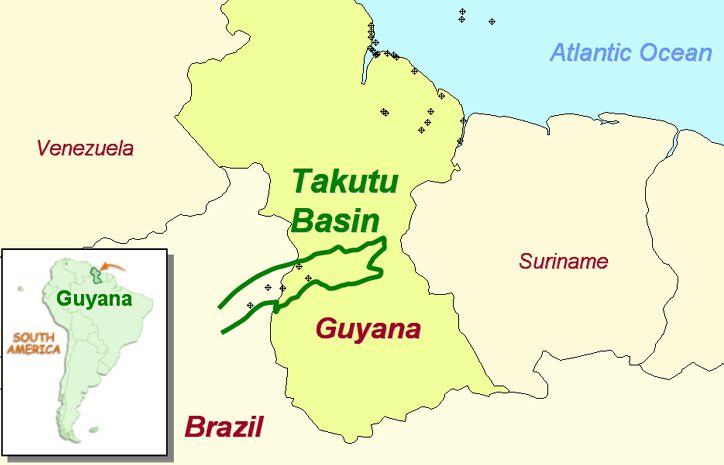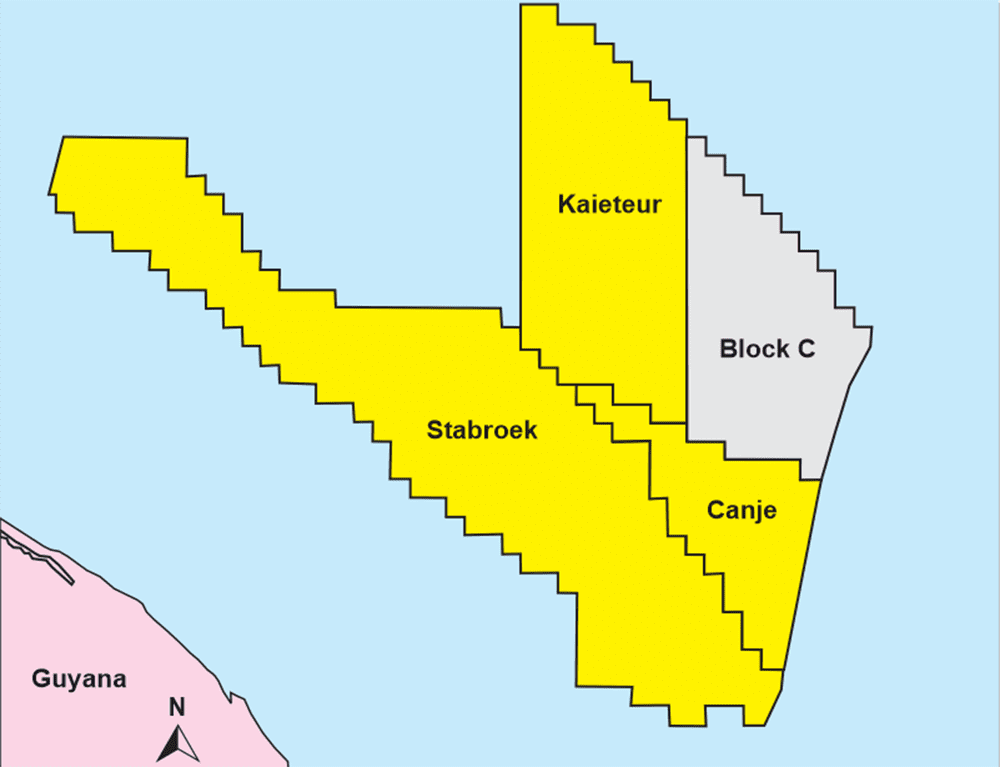Guyana – the hottest new petroleum exploration destination on the planet – is currently inviting oil explorers to tap into unlicensed onshore and offshore acreages.
As the country prepares to auction oil blocks later this year, the Guyana Office for Investment (GO-Invest) has released an investment prospectus which draws attention to “substantial acreage onshore and offshore [which] remains untapped.”
The onshore Takutu basin, named in the prospectus, was first drilled decades ago.
“The Takutu basin is a Mesozoic graben 280 km long and 40 km wide located in the southwestern area of Guyana. The Karanambo-1 well drilled there in 1982 by Home Oil Company, was the best prospect drilled within this basin. Located in southwestern Guyana, a small amount of light crude was accrued,” GO-Invest stated.

It said tests conducted on samples from Karanambo-1 found that the oil is of good quality, with 42◦ API density and less than 0.5% sulphur content. For comparison, ExxonMobil’s assay of the crude at Liza Phase 1 revealed 32◦ API density and 0.58% sulphur, while the Liza Phase 2 assay revealed 33.5◦ API density and 0.42% sulphur.
However, the geological characteristics of the Takutu basin are mainly naturally fractured reservoirs, according to the Guyana Geology and Mines Commission (GGMC), proving it more difficult to find commercial petroleum than regular reservoirs.
According to GGMC, the most recent drilling at Takutu occurred at the Apoteri K2 well in 2011. The regulator’s website also states that other wells drilled in Takutu are Lethem-1 (1980) and Turantsink-1 (1992).
As for offshore acreage, the Area C which is mentioned in the prospectus is situated northeast at the Suriname border and is connected to the ExxonMobil-operated Kaieteur and Canje blocks.

“That area is commonly known as the “ultra-deep-water area”. Water depths can be a minimum of 2.500 m in the southern part to around 4,500 – 5,000 m at its northern boundary. The Areal extent is approximately 9560 km2,” the prospectus states.
The offshore blocks which are currently licensed were issued on a non-competitive basin, through direct negotiations with the companies involved. The government has faced some criticism for this and has committed to issuing new licenses on a competitive basis, through a transparent process.



